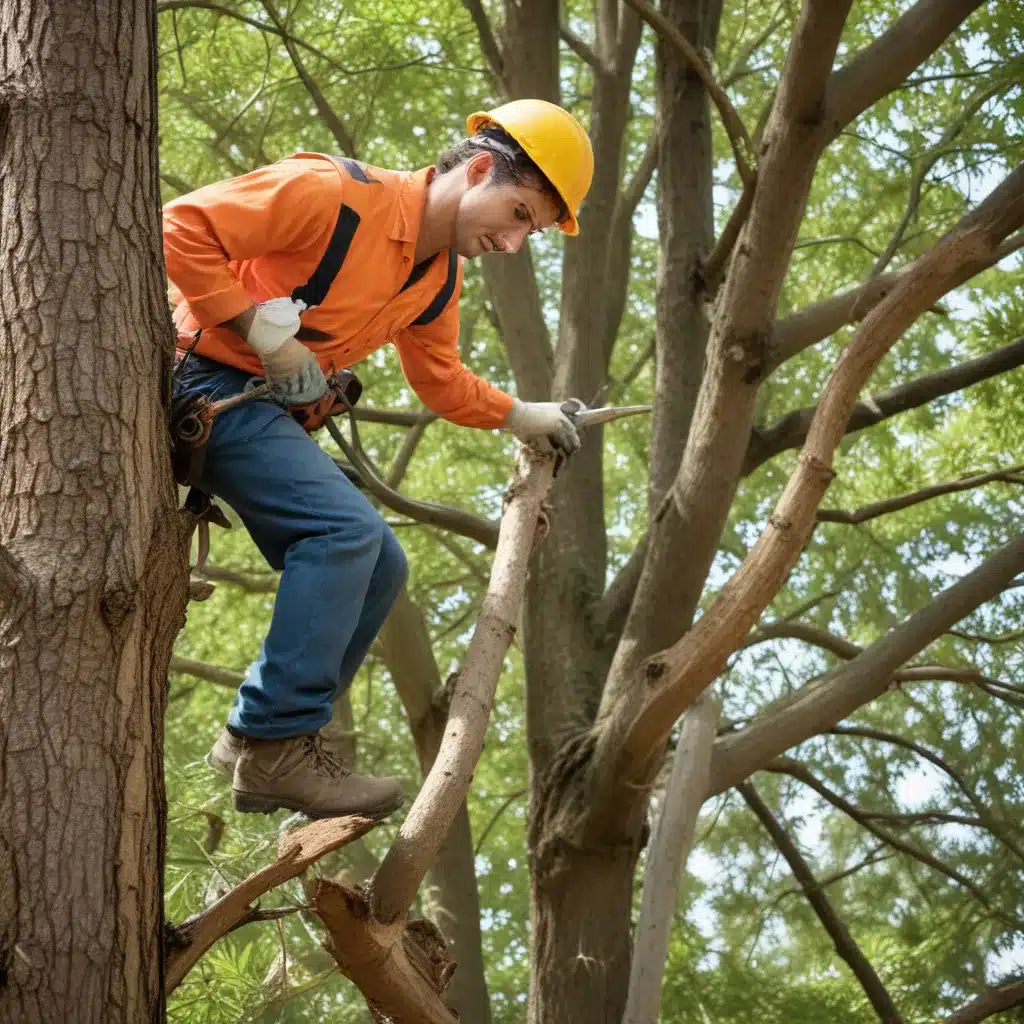
In the lush, verdant landscapes of Florida, the removal or alteration of trees is not a decision to be taken lightly. The state’s subtropical climate nurtures a diverse array of tree species, each playing a vital role in maintaining a healthy ecosystem. As such, tree permitting regulations are in place to protect this natural treasure and preserve the ecological integrity of local communities.
Understanding Local Regulations
Navigating the complexities of tree removal permits can be a challenging task, as the specific requirements often vary depending on your location within Florida. Generally, a tree removal permit is required in most situations where you plan to remove or significantly prune trees on your private property or land.
The rationale behind this permitting process is to safeguard the overall tree canopy and environmental health of the community. Tree removal permits are also mandated for commercial properties, such as office buildings, retail establishments, or industrial sites, where the permitting process may be more stringent due to additional considerations related to zoning, landscaping ordinances, and environmental impact assessments.
When it comes to public lands, such as parks, nature reserves, or other government-owned properties, tree removal permits are almost always required, as these areas are typically subject to stricter regulations and oversight to protect the natural resources and ecosystems they contain.
Obtaining a Permit
To obtain a tree removal permit in Florida, you will typically need to submit an application to the appropriate local, county, or state agency. The application process may require providing detailed information, such as site plans, arborist reports, and justification for the proposed tree removal or alteration. Application fees and processing times can vary depending on the jurisdiction and scope of the project.
It’s important to note that some tree species may be designated as protected or heritage trees, which would require additional considerations and approvals for removal or alteration. Examples of protected tree species in Florida include live oak, bald cypress, and gumbo limbo.
Exemptions and Exceptions
While tree removal permits are generally required, there are some exemptions and exceptions to the regulations. One common exemption is for the removal of dead, diseased, or hazardous trees that pose an immediate threat to public safety or property. In these cases, property owners may be able to remove the tree without a permit, but they may still need to provide documentation or notify the appropriate authorities.
Other exceptions may include pruning or trimming activities that do not constitute a significant alteration or removal of the tree, as well as certain agricultural or forestry operations that follow best management practices.
Reasons for Tree Removal
Trees may need to be removed or significantly altered for a variety of reasons, such as:
– Safety concerns: Trees that pose an immediate threat to people or property due to disease, damage, or instability.
– Development or construction: Clearing land for new buildings, infrastructure, or landscape redesign.
– Nuisance issues: Trees causing damage to structures, utilities, or interfering with property access.
– Ecological considerations: Removing invasive or problematic species to promote the health of the local ecosystem.
Application Procedures
The process of obtaining a tree removal permit typically involves the following steps:
1. Submitting a detailed application, which may include site plans, arborist reports, and justification for the proposed tree work.
2. Paying the required application and inspection fees, which can vary depending on the jurisdiction.
3. Scheduling an on-site inspection by a local authority or certified arborist to assess the trees and the proposed plan.
4. Receiving approval or denial of the permit application based on the review and inspection findings.
Inspections and Approvals
Once a permit is issued, the property owner or designated tree service provider may proceed with the approved tree removal or alteration work. In some cases, a final inspection may be required to ensure the work was completed according to the permit conditions.
If a tree removal permit is denied, most jurisdictions have an appeals process in place, which may involve presenting additional evidence or justification for the proposed tree work.
Protecting Sensitive Ecosystems
Tree removal regulations in Florida are not only in place to preserve the aesthetic and property value of the community, but also to protect the delicate ecological balance of the state’s natural landscapes. Removing trees can have far-reaching consequences, such as disrupting wildlife habitats, increasing soil erosion, and altering the microclimate of an area.
When evaluating tree removal requests, local authorities often consider the potential environmental impact and may require mitigation measures, such as the planting of replacement trees or contributions to environmental restoration efforts.
Mitigating Ecological Impact
In some cases, tree removal may be necessary, but it is crucial to ensure that the process is carried out in a responsible and sustainable manner. This may involve:
– Careful tree selection: Prioritizing the removal of non-native, invasive, or problematic species over native or ecologically significant trees.
– Minimizing disturbance: Employing techniques that minimize soil compaction, root damage, and disruption to surrounding vegetation.
– Implementing replanting plans: Replacing removed trees with appropriate species that can thrive in the local environment.
Penalties and Enforcement
Removing a tree without a required permit can result in significant fines and legal consequences. Violators may be required to replace the removed trees or implement mitigation measures, such as planting new trees or contributing to environmental restoration efforts.
To ensure compliance with all applicable regulations and avoid potential penalties, it is always advisable to work with a reputable and licensed tree service provider, like TriCounty Tree Care, that is well-versed in the latest tree permitting requirements.
By understanding the legal requirements for tree removal in Florida and working closely with local authorities and tree care professionals, you can ensure that any necessary tree work is conducted in a responsible and sustainable manner, preserving the state’s natural heritage for generations to come.


